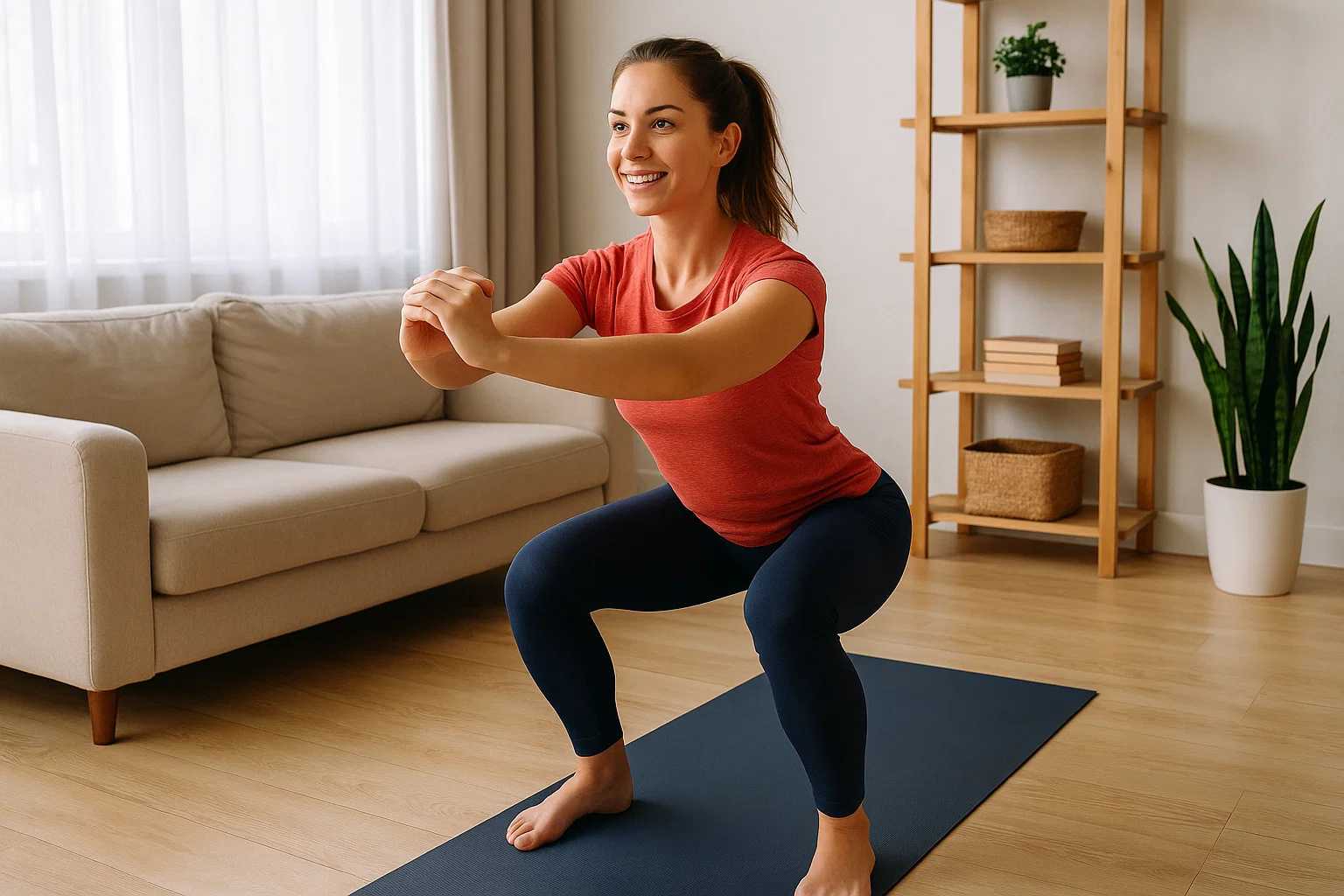When life gets busy or the gym isn’t an option, home workouts without equipment offer a powerful way to stay fit, consistent, and energized—right from your living room. With nothing but your body and a bit of space, you can improve strength, mobility, and endurance effectively. These exercises are backed by science, widely practiced, and adaptable to any fitness level. Here’s a detailed guide to 15 tried-and-true equipment-free workouts that deliver real results.
1. Push-Ups
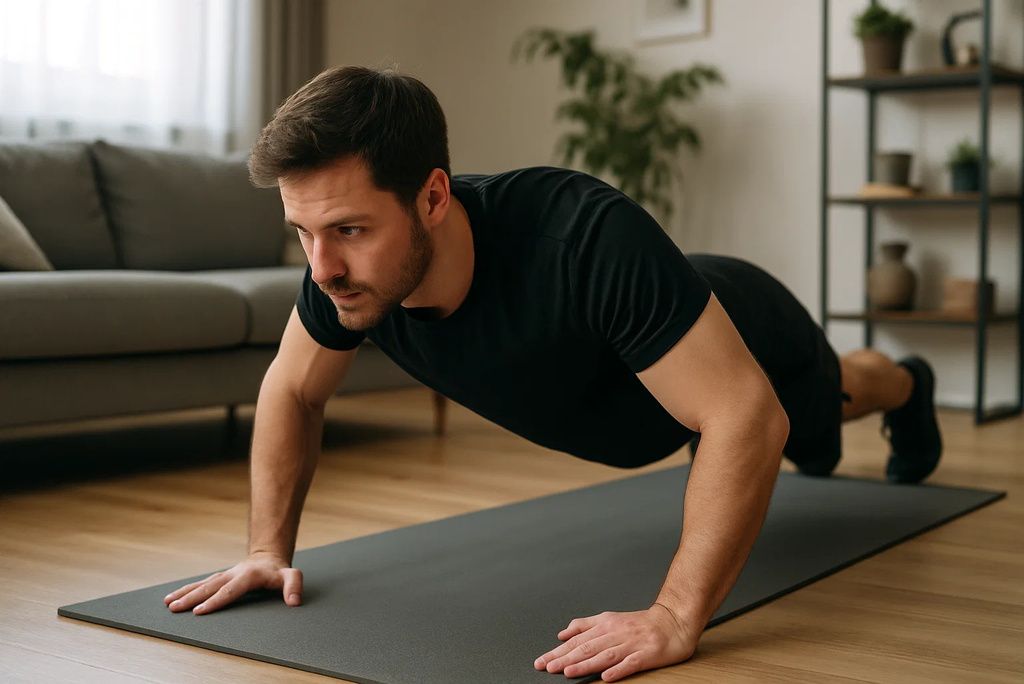
Push-ups are a staple for building upper body and core strength. They target the chest, shoulders, triceps, and abdominals in a single movement. The beauty of push-ups lies in their versatility—incline push-ups are beginner-friendly, while diamond push-ups increase triceps engagement.
A study published in JAMA Network Open found that men able to perform 40 or more push-ups had a significantly lower risk of cardiovascular disease than those who could do fewer than 10. They also improve shoulder stability and functional pressing power. Be mindful of hand placement and back alignment to avoid strain and ensure proper activation. (source)
2. Squats
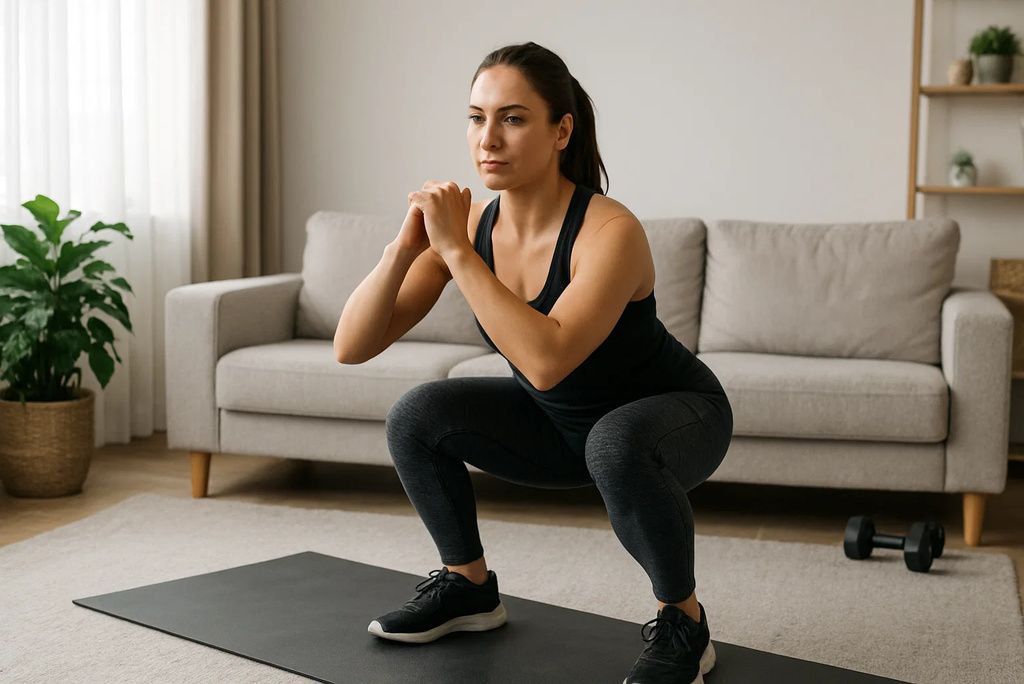
Squats are fundamental for lower body strength, engaging the quadriceps, hamstrings, glutes, and calves. They mimic natural movement patterns like sitting and standing, making them crucial for daily function. Bodyweight squats can be progressed with tempo variations or single-leg versions like pistol squats.
Research from the Journal of Strength and Conditioning Research highlights squats’ impact on muscular development and balance enhancement. Proper form is key—knees should track over the toes, and the spine should remain neutral. Doing squats regularly improves joint health and metabolic rate, especially when incorporated into circuit routines. (source)
3. Planks

Planks strengthen the core, lower back, shoulders, and even glutes. They improve postural control and help prevent injuries, especially in the lower back. Unlike crunches, planks engage the entire core system without spinal flexion.
A 2016 study in Global Advances in Health and Medicine concluded that planks are more effective than traditional crunches for core endurance and posture improvement. Variations such as side planks or forearm planks add diversity and target specific muscle groups. Holding a plank for 30–60 seconds daily contributes to overall strength and athletic performance. (source)
4. Glute Bridges
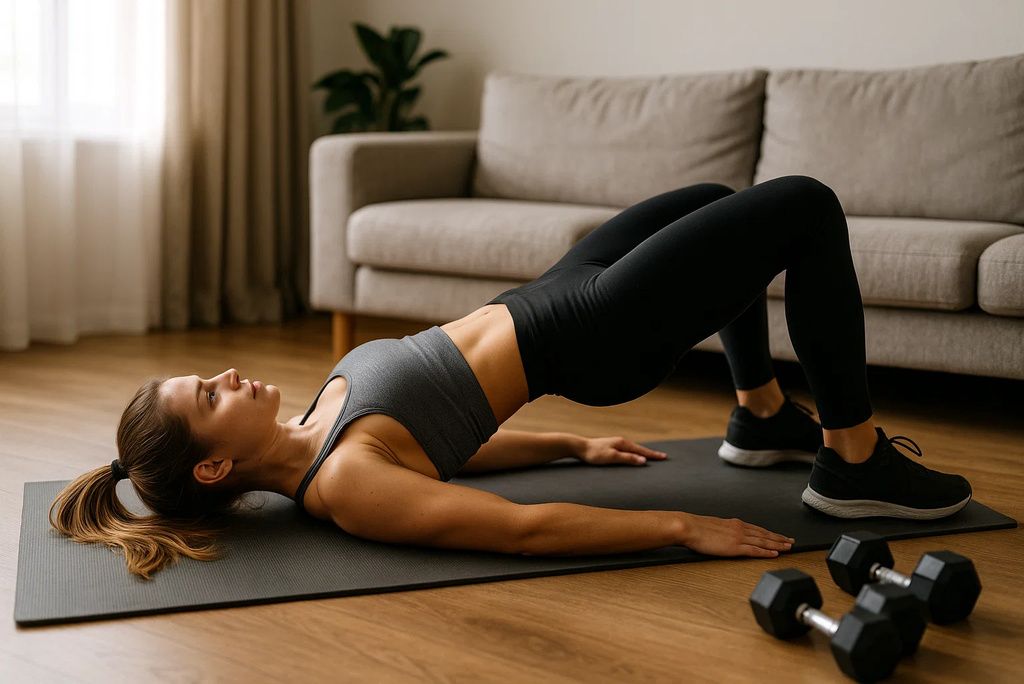
Glute bridges activate and strengthen the posterior chain, especially the glutes and hamstrings. They’re ideal for countering the effects of prolonged sitting and improving pelvic stability. This low-impact movement can also aid in reducing lower back pain. A report from the Clinical Biomechanics Journal emphasized its usefulness in activating underused gluteal muscles. For variation, try single-leg glute bridges or add a pause at the top for increased muscle engagement. These are particularly beneficial before workouts as activation drills or as part of a rehab routine.
5. Jumping Jacks
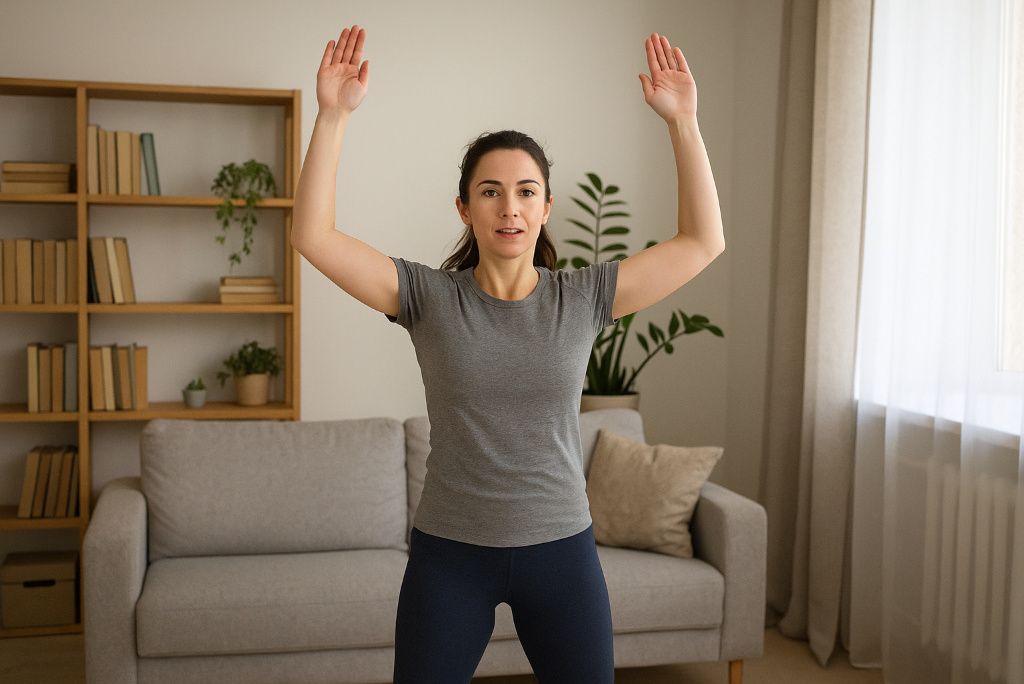
This classic cardio move increases heart rate and burns calories while improving coordination. Jumping jacks activate multiple muscle groups, including calves, shoulders, and the core. According to the American Council on Exercise, they’re a simple way to raise cardiovascular endurance and can be modified for low-impact training. A common component in warm-ups, they also elevate mood by boosting endorphin levels. Consistent practice helps improve lung capacity and stamina without requiring any equipment or training space. (source)
6. Mountain Climbers
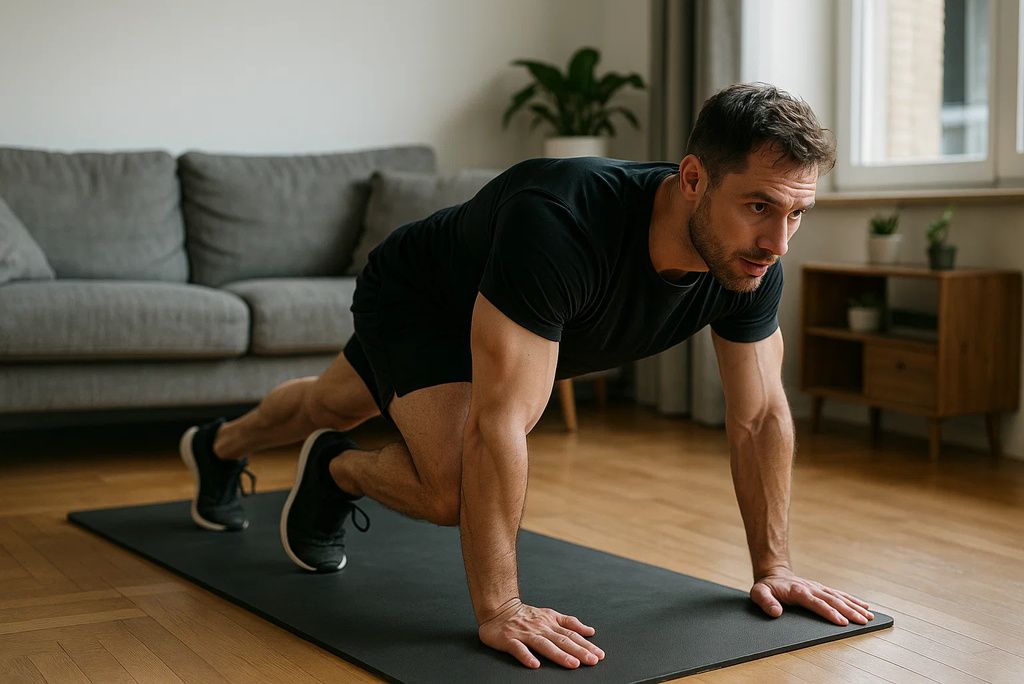
Mountain climbers combine core strengthening with cardiovascular intensity. This dynamic movement mimics sprinting while in a plank position, targeting abs, shoulders, and legs simultaneously. They’re highly effective for fat burning and agility. A study in the International Journal of Exercise Science confirms that mountain climbers increase metabolic rate and improve aerobic capacity. To reduce wrist stress, perform them on the forearms. Beginners can slow the tempo, while advanced users can incorporate cross-body variations for greater oblique engagement. (source)
7. Wall Sits
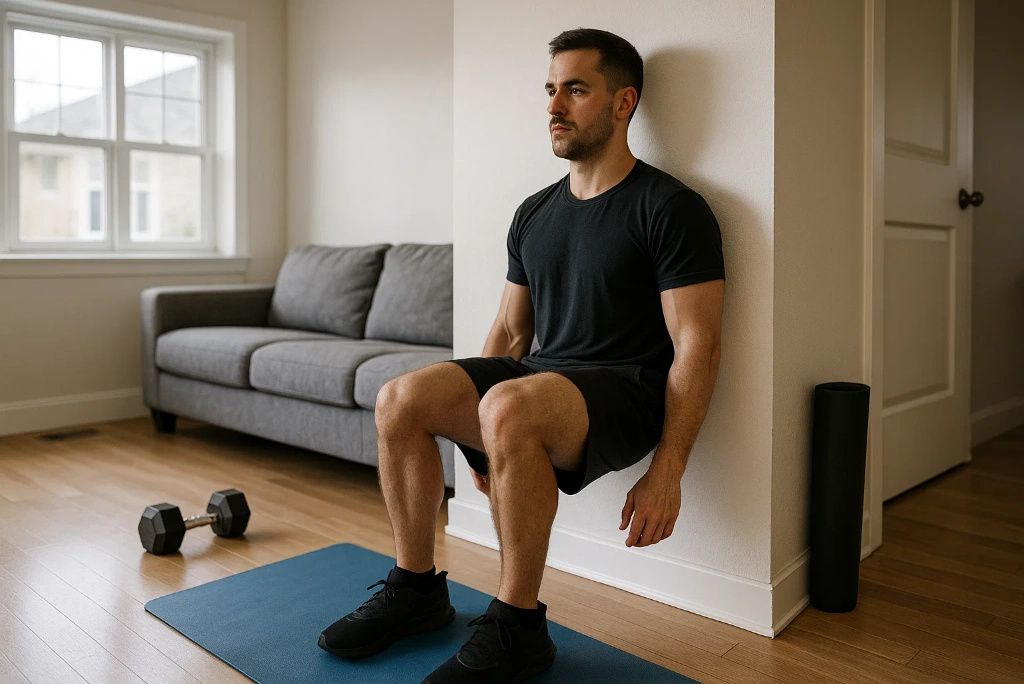
Wall sits are a static isometric exercise that strengthens the thighs, calves, and core. Holding a seated position against a wall challenges endurance and builds mental toughness. A clinical study in Sports Medicine International Open validated their effectiveness in increasing lower limb endurance, especially for runners and cyclists. Try holding the pose for 30 seconds and build up gradually. For more intensity, place an object on your lap or try pulse movements at the bottom range. (source)
8. High Knees

High knees are a powerful cardio drill that raises heart rate and engages hip flexors, quads, hamstrings, and the core. They also help improve speed, coordination, and athletic performance. According to Verywell Fit, high knees offer a calorie-burning equivalent to jogging and are excellent for HIIT circuits. The movement can be adjusted for intensity or done in short bursts of 20–30 seconds. Incorporate them between strength sets to keep your heart rate up and maximize calorie burn.
9. Triceps Dips (Using a Chair or Edge)
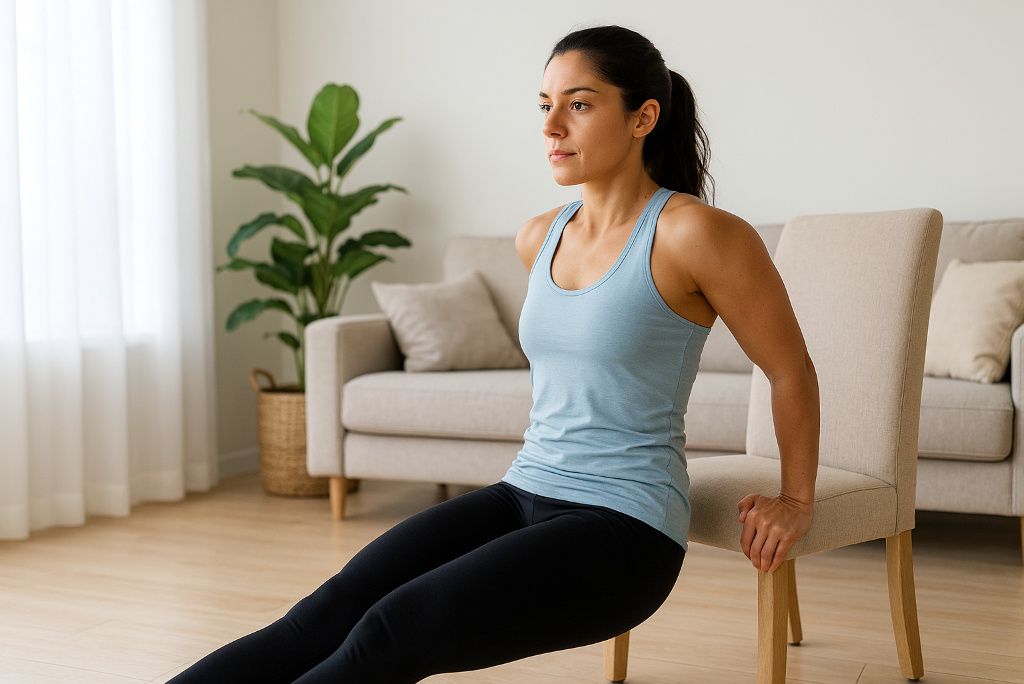
You don’t need gym machines to train your arms. Triceps dips use a sturdy surface like a chair to target the back of the arms, shoulders, and chest. This movement is excellent for developing upper-body pushing strength and reducing arm flab. The American College of Sports Medicine suggests dips as part of balanced upper-body conditioning. Be sure to avoid shoulder hunching and maintain controlled movement. Beginners can bend their knees for less resistance, while advanced versions involve elevating their feet.
10. Step-Ups (Using a Stair or Sturdy Surface)
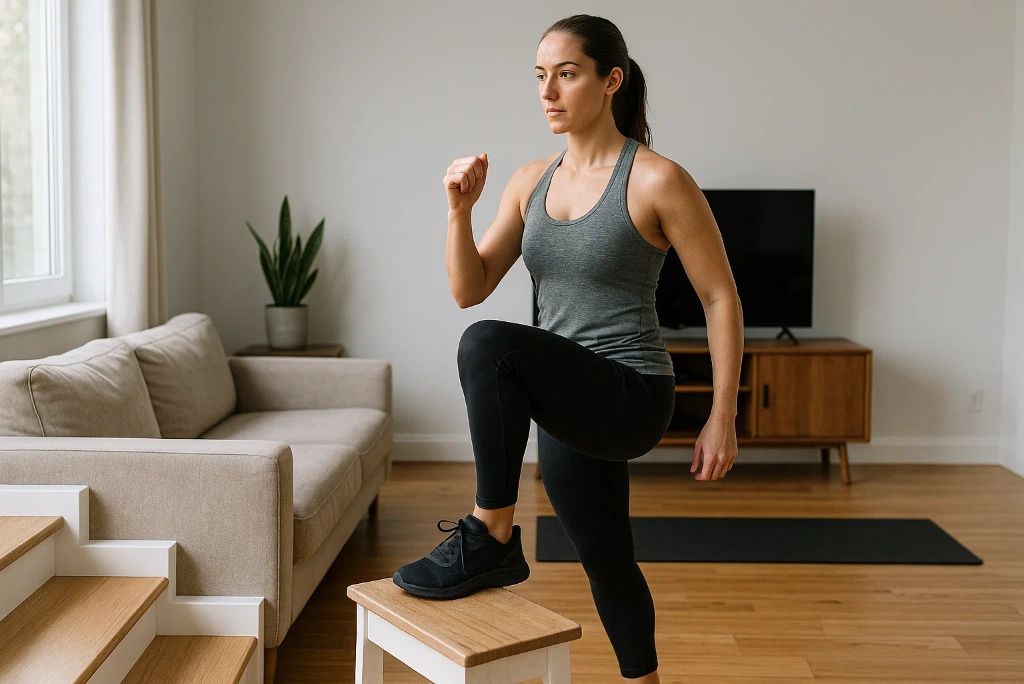
Step-ups are functional, unilateral movements that improve leg strength, balance, and coordination. They target the quads, hamstrings, and glutes and simulate everyday actions like climbing stairs. Harvard Health notes that step-ups are excellent for joint-friendly lower body work. To add intensity, increase the step height or add a knee drive at the top. This movement is particularly beneficial for improving gait, posture, and lower limb symmetry—great for both athletic performance and injury prevention.
11. Burpees
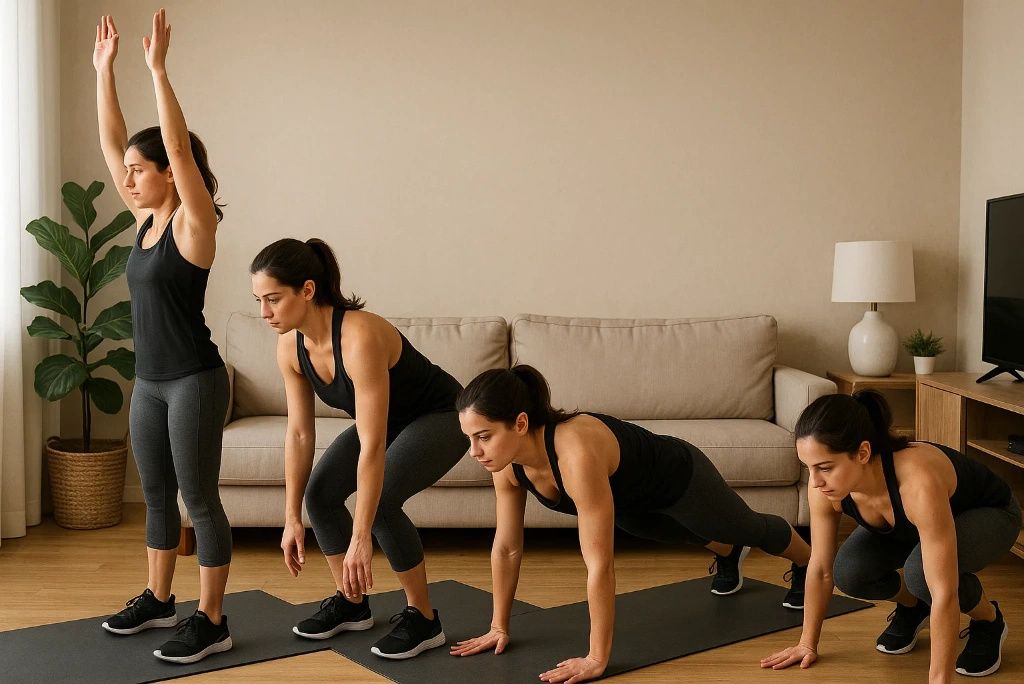
Burpees are a full-body, high-intensity exercise that combines strength and cardio. They engage the chest, arms, legs, and core while elevating the heart rate. A 2014 study in the Journal of Human Kinetics demonstrated that burpees enhance anaerobic performance and metabolic conditioning. Although challenging, burpees can be modified by eliminating the jump or push-up. This exercise builds explosive power, stamina, and mental grit. Use them in interval workouts or as a finisher for a high-calorie burn. (source)
12. Calf Raises
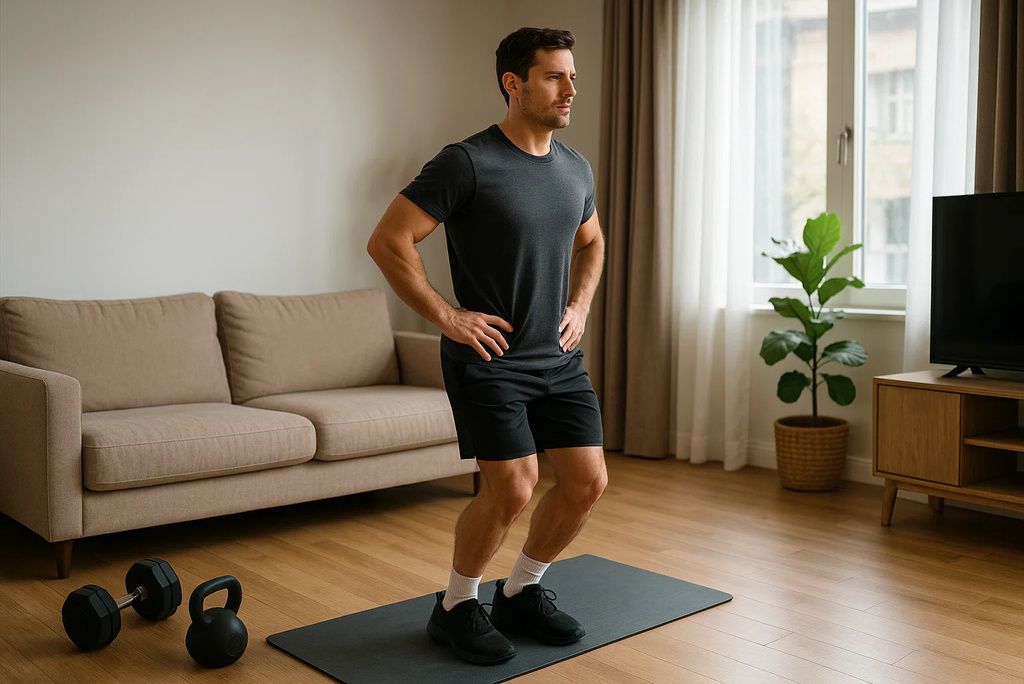
Calf raises build lower leg strength and improve ankle stability, crucial for running, jumping, and balance. They require no space and can be done anytime, even during TV commercials. A study published in Foot & Ankle International found that regular calf strengthening reduces the risk of Achilles tendon injuries. To maximize results, pause at the top of each rep and try single-leg variations. Incorporate calf raises into your daily routine for better leg definition and performance.
13. Leg Raises
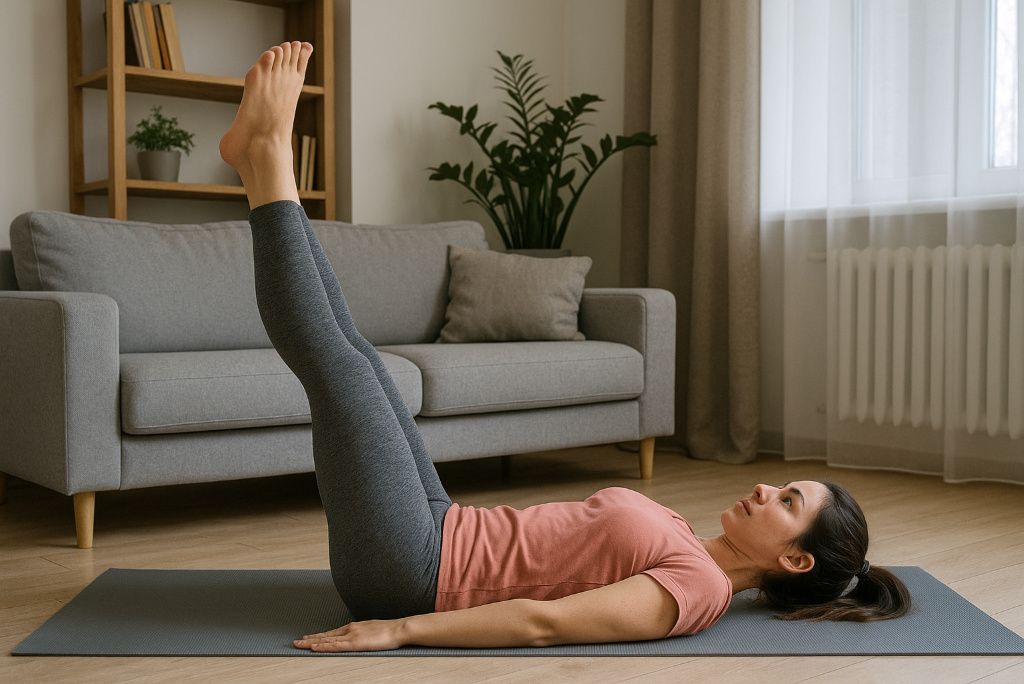
Leg raises target the lower abdominal region more effectively than crunches and are particularly useful for building core stability. Lying flat on the floor, the movement involves lifting the legs without bending the knees. According to Healthline, this motion improves lower abdominal strength and helps support the spine when done with proper form. Be cautious of arching the lower back—engage your core to prevent strain. Variations include flutter kicks or holding the legs a few inches above the floor. (source)
14. Bear Crawls

Bear crawls are a full-body movement that mimics quadrupedal locomotion, building coordination, core strength, and shoulder stability. Moving forward on hands and toes with knees hovering above the ground, bear crawls demand total-body tension. Men’s Health notes their effectiveness in building mobility, coordination, and conditioning. You can use them as part of a warm-up or endurance circuit. Ensure slow, controlled steps to prevent unnecessary strain and maximize muscle engagement. They’re a fun, primal move with serious benefits. (source)
15. Superman Hold
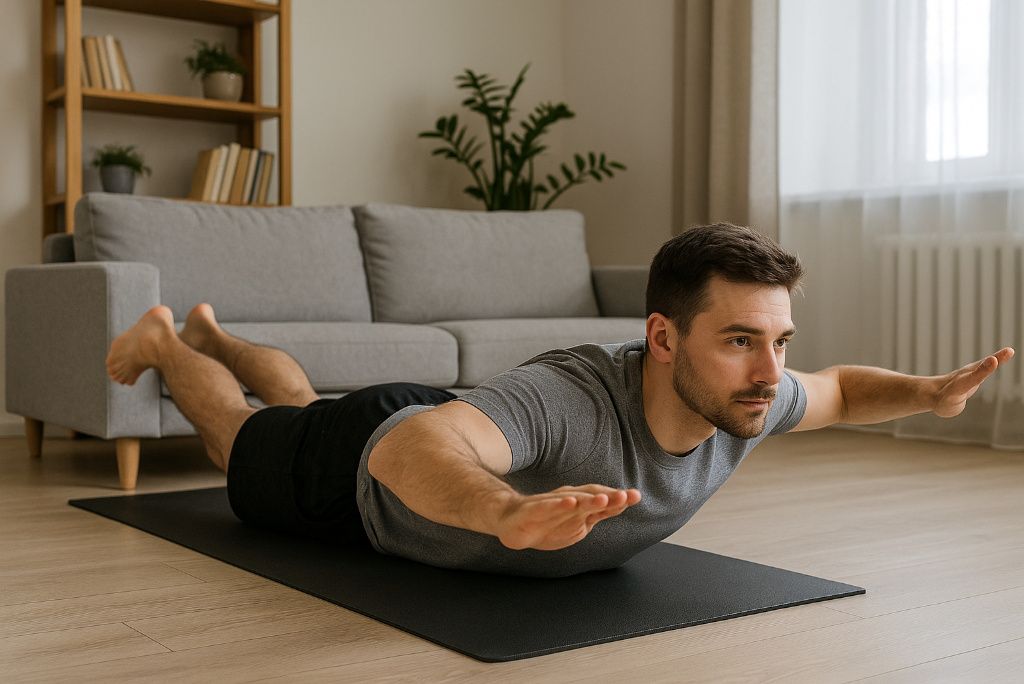
This isometric hold targets the lower back, glutes, and hamstrings—muscles often neglected in standard core routines. Lying face down, lift arms and legs off the ground like Superman in flight. It counteracts poor posture caused by sitting and improves spinal stability. According to Spine Health, strengthening the posterior chain reduces the risk of back pain and disc issues. Beginners can start with alternating arm and leg lifts. Maintain the position for 20–30 seconds and slowly extend the duration over time.
Disclaimer: This article is for informational purposes only and is not a substitute for professional medical advice, diagnosis, or treatment. Always consult your physician before starting any new exercise program.

